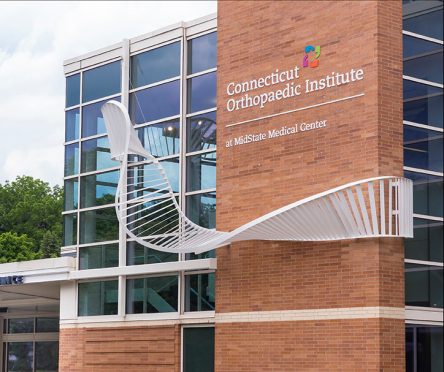While cell phones are great for keeping us entertained, they can also be a real pain — in the neck.
Whether it’s from phones or other causes, about 20% of people will experience neck pain at some point in their lives, says Alfred Hicks, DO, a spine surgeon with the Connecticut Orthopaedic Institute at MidState Medical Center.
“It’s fairly common to hear people say they have neck pain. Sometimes it’s from an injury, but more often, it’s the repetitive motions of daily life that wears on us,” says Dr. Hicks.
Looking for relief? Dr. Hicks breaks down common causes of neck pain and what you can do to manage it.
3 everyday causes of neck pain.
Accidents and sports-related injuries can leave you with pain in your neck and upper shoulders, but other causes come from everyday activities. The most common causes of neck pain, according to Dr. Hicks are:
- Too much screen time. Having your face angled toward the ground is the opposite position your head and neck should be in. “We didn’t get the iPhone update,” Dr. Hicks chuckles.
- Work-related strain. This includes activities that cause you to turn or hold your head and neck in an unnatural position for too long.
- Poor ergonomics at your workstation. Looking up or down at your computer monitor or having your hands too high or low on a keyboard are usually the culprit.
“This poor posture can cause stress in the neck area, which leads to a build-up of tension that triggers neck pain,” Dr. Hicks explains.
> Related: Is Your Poor Posture Causing Tech Neck?
4 ways to manage neck pain.
In most cases, neck pain can be easily managed through changes to your workspace and lifestyle.
Dr. Hicks suggests managing neck pain by:
- Avoiding the cause of the problem. “Don’t do the thing that’s aggravating your neck!” he says. Try changing the way your desk is set up, moving monitors up or down, and fixing your chair height. You can also pare down time spent hunched over technology.
- Regular massages. Try therapeutic massage or visiting a chiropractor to work out the knots and realign neck bones to ease pain.
- Anti-inflammatory medications. Over-the-counter or prescription can help.
- Physical therapy. Therapists can address habits causing neck pain and give you exercises to do at home. “It can be easy to forget to do the exercises alone but having a PT appointment helps you focus on them formally,” Dr. Hicks notes.
When to see a doctor.
If the pain doesn’t improve after these approaches, it worsens or triggers numbness, tingling or pain down the arms, you should talk to a doctor. Dr. Hicks suggests starting with your primary care provider.
And the good news is that usually, conservative treatment works.
“Very few patients will need surgery for neck pain. Most will find relief from other types of treatment,” he says.



